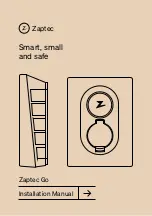
5. Remove the dipstick, wipe it clean and reinsert it until
seated.
6. Remove the dipstick again and note the fluid level on
both sides. The fluid level should be between the “HOT”
(upper) reference holes on the dipstick at normal operat-
ing temperature. Verify that solid coating of oil is seen on
both sides of the dipstick. If the fluid is low, add as
required into the dipstick tube.
Do not overfill.
After
adding any quantity of oil through the oil fill tube, wait
a minimum of two (2) minutes for the oil to fully drain
into the transmission before rechecking the fluid level.
NOTE:
If it is necessary to check the transmission
below
the operating temperature, the fluid level should be
between the two “COLD” (lower) holes on the dipstick
with the fluid at approximately 70°F (21°C) (room tem-
perature). If the fluid level is correctly established at
room temperature, it should be between the “HOT”
(upper) reference holes when the transmission reaches
180°F (82°C). Remember it is best to check the level at the
normal operating temperature.
CAUTION!
Be aware that if the fluid temperature is below 50°F
(10°C) it may not register on the dipstick. Do not add
fluid until the temperature is elevated enough to
produce an accurate reading.
7. Check for leaks. Release parking brake.
To prevent dirt and water from entering the transmission
after checking or replenishing fluid, make certain that the
dipstick cap is properly reseated. It is normal for the
dipstick cap to spring back slightly from its fully seated
position, as long as its seal remains engaged in the
dipstick tube.
394
MAINTAINING YOUR VEHICLE
Summary of Contents for Ram Power Wagon
Page 2: ......
Page 8: ......
Page 40: ...Inserting Latch Plate In Use Position 40 THINGS TO KNOW BEFORE STARTING YOUR VEHICLE...
Page 68: ...Quad Cab Tether Strap Mounting 68 THINGS TO KNOW BEFORE STARTING YOUR VEHICLE...
Page 74: ......
Page 89: ...Blindspot Mirror Trailer Towing Position UNDERSTANDING THE FEATURES OF YOUR VEHICLE 89 3...
Page 110: ...110 UNDERSTANDING THE FEATURES OF YOUR VEHICLE...
Page 111: ...UNDERSTANDING THE FEATURES OF YOUR VEHICLE 111 3...
Page 112: ...112 UNDERSTANDING THE FEATURES OF YOUR VEHICLE...
Page 166: ...INSTRUMENTS AND CONTROLS 166 UNDERSTANDING YOUR INSTRUMENT PANEL...
Page 167: ...INSTRUMENT CLUSTER UNDERSTANDING YOUR INSTRUMENT PANEL 167 4...
Page 226: ...Operating Tips Chart 226 UNDERSTANDING YOUR INSTRUMENT PANEL...
Page 237: ...Angles A B C and D STARTING AND OPERATING 237 5...
Page 258: ...UNDERSTANDING THE FEATURES OF YOUR WINCH Winch Components 258 STARTING AND OPERATING...
Page 304: ...304 STARTING AND OPERATING...
Page 362: ......
Page 366: ...ENGINE COMPARTMENT 5 7L 366 MAINTAINING YOUR VEHICLE...
Page 420: ......
Page 450: ......
Page 451: ...INDEX 10...
















































